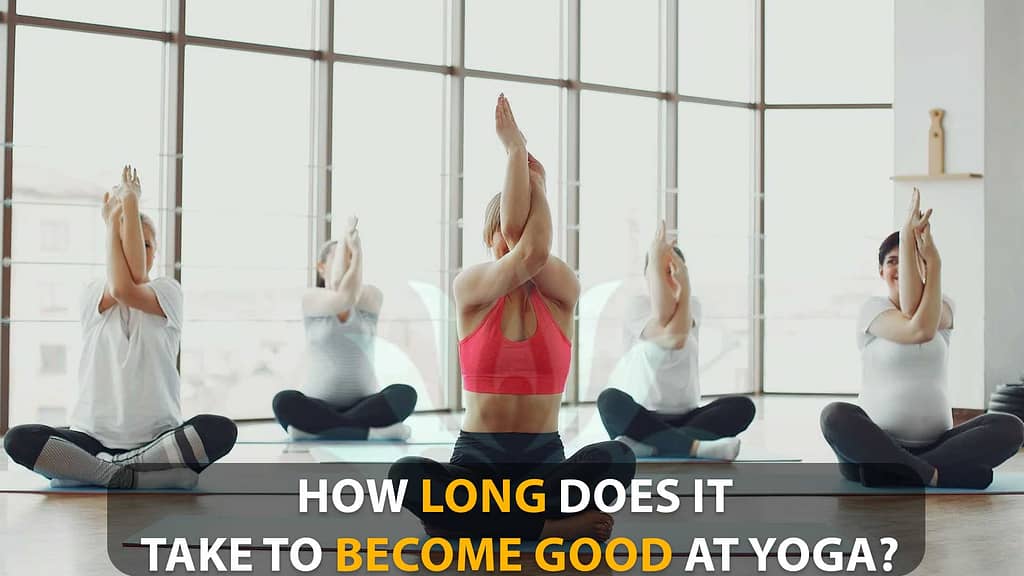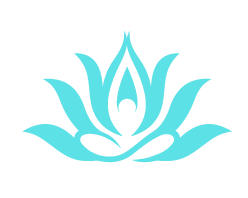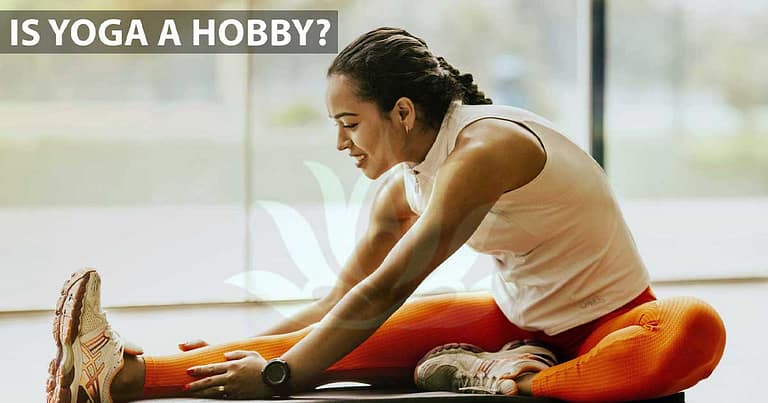How Long Does It Take To Become Good At Yoga? – Mastering The Art Of Yoga In 2023

How Long Does It Take To Become Good At Yoga?
It will take you a year to feel proficient at something like an hour a day, five or six times a week, depending on your standards of excellence. Everybody has a unique body.
The first steps on a yoga path are thrilling and life-altering adventures. If you’re starting with this age-old technique, you may be curious about how long it takes to achieve high expertise and see results.
How Long Does It Take To See Results With Yoga?
After a few weeks of regular practice, some people may notice that they are more flexible and have better posture. But big changes in strength, balance, and general health may take a few months or even longer.
It would help if you were patient, committed, and consistent to get the most out of yoga. Here we will explore the many variables that affect your yoga practice and guide how to use them to your advantage.
Realizing That Each Yoga Practice Is Unique

Because of each yoga practitioner’s uniqueness, no fixed time is required to see results. The following factors largely determine the duration it takes to master yoga:
1. Dedication and Persistence
Consistency is key to making gains in your yoga practice. Regular rehearsal, even for a few minutes, outperforms occasional marathon sessions. Building a firm foundation and allowing your body and mind to adjust to the exercise takes time and requires consistency.
2. How Long and How Hard You Should Train
The duration you devote to your yoga practice is crucial to its effectiveness. No set number of sessions is necessary or recommended, although most experts agree that three to four sessions per week of around one hour each is optimal.
To minimize exhaustion and injury, it’s important to focus on your body and build up to higher levels of intensity and longer sessions gradually.
3. The Place to Begin
When first exploring yoga, everyone does it from unique vantage points. How rapidly you improve depends on some factors, including your current fitness and flexibility levels and your degree of expertise and familiarity with the activity.
Accept where you are and work on improving yourself rather than focusing on how you measure up to others.
Read:
Does Yin Yoga Burn Calories? Benefits In 2023
How Long Does It Take A Beginner To See The Benefits Of Yoga?

As you practice yoga, you’ll inevitably reach a new level of proficiency. The usual steps, along with their estimated durations, are as follows:
1. Initial Stage (4-8 weeks)
The first phase of yoga training focuses on posture, alignment, and breathing fundamentals. Strength training, flexibility, and self-awareness are all essential. Take your time building a foundation and becoming used to the routine.
2. Intermediate Stage (3-6 months)
You’ll take your practice to the next level by trying more complex postures and sequences. Strength, flexibility, and equilibrium will all increase as your body adjusts. You’ll develop to your full potential as you devote yourself to your yoga practice and learn about various approaches.
3. Advanced Stage (1 year and beyond)
Improve your practice by learning new positions, breathing methods, and meditation techniques. Gain the full benefits of yoga as your mind and body strengthen their connection. Always keep in mind that your practice of yoga will develop and mature throughout your life.
The Benefits Of Expert Yoga Practice

1. Health and Fitness
To be a yoga master, you must be in tip-top shape. Flexibility, strength, balance, and posture may all benefit from regular yoga practice. It may help you become healthier and more physically active.
2. Mental benefits
Yoga has many positive effects on one’s mental health in addition to its physical ones. A strong mind-body connection, less tension, increased focus, and heightened awareness are all signs of a yogi’s proficiency. It may aid emotional regulation, raise self-awareness, and foster inner serenity.
3. Anxiety reduction
One of the most obvious benefits of mastering yoga is its stress relief. Yoga helps activate the body’s relaxation response via breathing exercises, meditation, and physical postures, decreasing stress hormones and increasing feelings of calm.
4. Discipline and concentration
patience and focus are necessary for mastery of yoga. Consistent training develops self-control and strengthens dedication to objectives on and off the mat. These traits also help you in other aspects of your life, permitting you to get more done in less time and accomplish more of your goals.
5. Sync your body and mind
Yoga practice may aid you in becoming more in tune with your body and mind. You must tune in to your body’s small cues and respond accordingly. With this comprehension, you will be better able to avoid harm, enhance your posture, and make deliberate decisions in your everyday life.
Read:
Can Beginners Do Ashtanga Yoga? Complete Guide In 2023
The Downsides Of Yoga Expertise

1. Stress to consistently good performance
As your yoga abilities grow, so too may the pressure to consistently provide impressive results. This stress might cause you to evaluate your practice negatively, compare it to others, and ultimately cause you to stop enjoying it and giving yourself the freedom it provides.
Remember that your yoga practice is an inside journey and that your success should be gauged by your internal development rather than by the approval of others.
2. Possibility of Injury
Advanced yoga postures and sequences need more strength, flexibility, and balance. Damage is more likely to occur if you push yourself above your limitations without supervision or planning. Injury can be avoided if you pay attention to your body, practice mindfully, and learn from qualified instructors.
3. Being obsessed with physical success
While having a strong physical presence is wonderful, it shouldn’t be the only criterion for success in yoga. Regarding health, yoga considers the whole person—physical, mental, and spiritual. It’s crucial to keep things in perspective and not get obsessed with physical success.
4. Price
When you reach a high level of proficiency in yoga, you can be tempted to evaluate your progress concerning others or cultivate an excessive feeling of self-importance. This might counter the tenets of yoga, which center on non-attachment, compassion, and acceptance of oneself.
Keep your feet on the ground, cultivate a humble attitude, and know that yoga is a practice for the rest of your life.
How Long Did It Take For You To Become Flexible Doing Yoga?

Within two to four weeks, you should feel a change in your flexibility. But you can only do that if you stretch at least five times a week. It would help to do different stretches so your body can feel the burn.
Read:
Is It Okay To Wear Yoga Pants In Public? – Pros And Corns In 2023
How Can 30 Days Of Yoga Change You?
Doing yoga for 30 days can lead to big changes in your body and mind. When you practice regularly, you can improve your flexibility, strength, balance, and stress levels.
It also makes you more aware, gives you a sense of calm, and deepens the connection between your mind and body, which are good for your general health.
Conclusion
How long it takes to master yoga is a question without a straightforward solution. It all depends on your motivation, consistency, starting place, and final objectives. Enjoy the process, aim for improvement rather than perfection, and feel yoga’s positive effects on your life.
yoga isn’t just about becoming in shape; it’s a holistic practice that benefits your whole being.
If you make yoga a daily base practice of your life, you will see positive changes over time. Honor the passage of time and get the life-changing advantages of this time-tested method.
Remember that your yoga experience will be different from everyone else’s. Enjoy the benefits of yoga as you accept the challenge of consistent practice.
Frequently Asked Question: (FAQs)
How often should I practice yoga to improve quickly?
Personal tastes, schedules, and goals determine practice frequency. Yoga should be practiced at least 2-3 times weekly to see results.
Consistency and regularity are essential to yoga success. Even 20-30 minutes a day of steady practice can have results over time. Listen to your body and determine the ideal practice schedule.
Is yoga soreness normal?
Muscle discomfort is common, especially for beginners and after rigorous yoga sessions. Yoga uses muscles rarely used in other activities. Soreness should lessen in a day or two.
To avoid injury, listen to your body, practice within your limits, and avoid overexertion. As you get stronger, post-yoga discomfort lessens.
Is home yoga possible?
Both choices work. Yoga courses offer expert instruction, appropriate alignment, and a supportive community. Home yoga is also good.
Home practice includes online lectures, tutorials, and guided videos. Home practice requires discipline, focus, and consistency. Start with shorter sessions and expand them as you get more comfortable.
Yoga progress indicators?
Yoga progress goes beyond advanced positions and tremendous flexibility. It involves physical, mental, and spiritual progress. Improved strength, flexibility, posture, breath control, stress reduction, self-awareness, and self-connection are signs of improvement. It’s crucial to celebrate each person’s progress.
Can I learn yoga without flexibility?
Yes! Yoga does not require flexibility. Yoga increases flexibility and suppleness. Yoga combines strength, balance, breath control, awareness, and more. Everyone may improve their range of motion, flexibility, and other skills with constant practice.
Read Also
- Is Yoga A Hobby? – Benefits And Drawbacks in 2023
- Can We Do Yoga Twice A Day? – Advantages And Disadvantages In 2023
- At What Age Can You Start Yoga? – What Is Minimum And Maximum Age In 2023
- Can Yogis Fly? Exploring The Myth And Reality About Levitate in 2023
- Is Yoga Meant To Worship Gods? – Why Yoga Is Misunderstood As Worship? In 2023
- Is Fat Guy Doing Yoga? Easy Yoga Poses for Obesity In 2023






